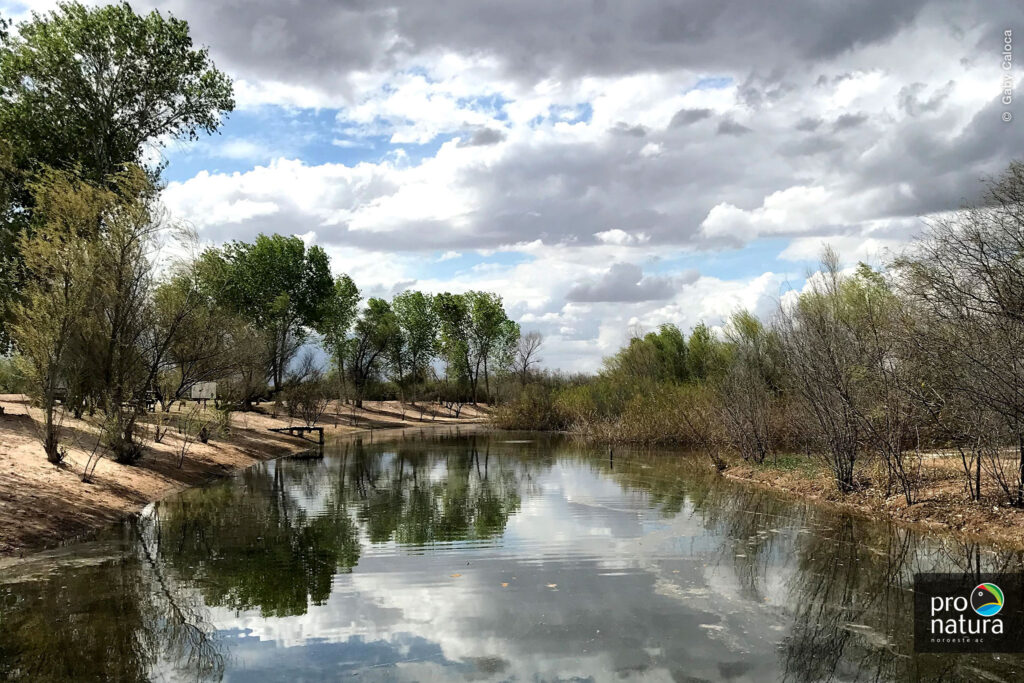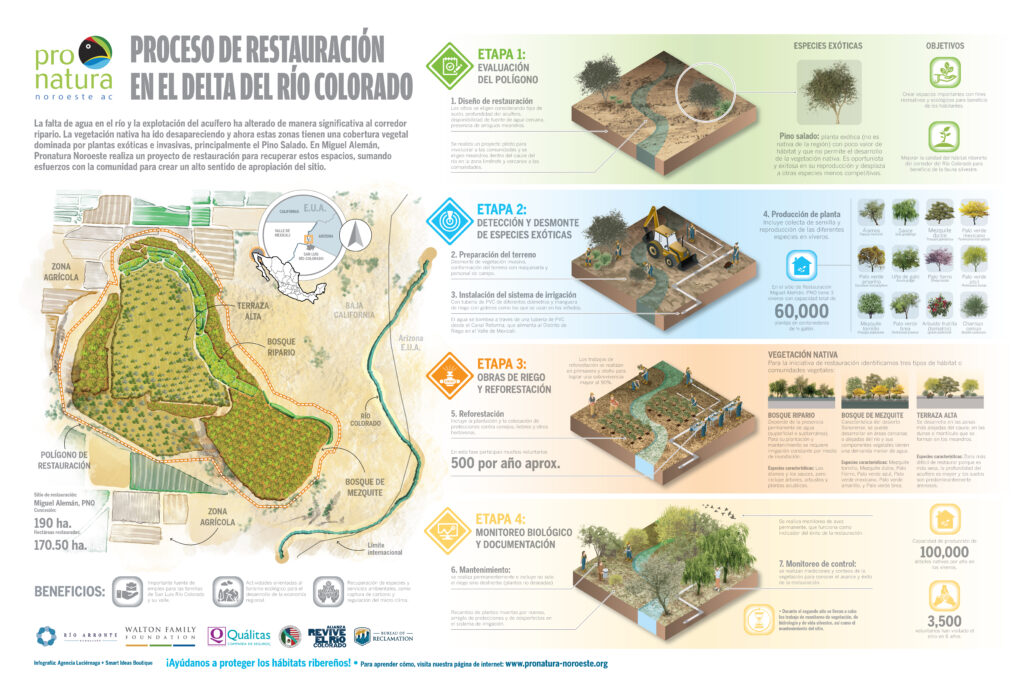Since the decrease in water flow through the original channel in the Colorado River Delta, the impact on the riparian corridor and aquifers has been profound. With native flora being lost and desertification accelerating, success with the Miguel Aleman restoration project has been a breath of fresh air – and hope – as well as an example of what is possible with creativity, effort and a little water.
As part of the conservation initiatives in the Colorado River Delta promoted by Pronatura Noroeste, together with allies such as the Arronte River Foundation, the Walton Family Foundation, the International Boundary and Water Commission, the Bureau of Reclamation, Qualitas and the Revive the Colorado River Alliance, since 2010, we have been directly involved in the rehabilitation of 170 hectares – out of a 190 hectare concession – that was dominated by exotic and invasive plants.
An environmental restoration process takes time. Years of continuous work guided by a strategic plan with well-defined stages. The first step of the project was to come up with a restoration design through an evaluation of the working polygon: the starting point.
At this stage, key data on the potential site were obtained, such as soil type, aquifer depth, availability of water sources and traces of old meanders in the site, which served to delimit areas of opportunity.
Once the site was defined, exotic species were detected and cleared. This second stage concentrated efforts on the removal of Salt Pine (Tamarix ramosissima), an invasive plant of little ecological value that does not allow native plants to grow, and which had spread uncontrollably through the terrain. To complete the hard work, it was necessary to hire heavy machinery and personnel in the field. Along these activities, began the installation of the irrigation system from the Canal Reforma, from which water would be obtained to irrigate the site.
At this time, began the production of native plants that would be transplanted to the site, once the clearing and adaptation of the land had been completed. Species such as Poplar (Populus fremontii), Willow (Salix gooddingii), Sweet Mesquite (Prosopis glandulosa), Mexican Palo verde (Parkinsonia microphylla), Mezquite tornillo (Prosopis pubescens) and Palo fierro (Olneya tesota), among others, germinate and grow in four nurseries managed by Pronatura Noroeste. Today, the nurseries have a production capacity of 70,000 plants in half-gallon containers.

In the third stage, irrigation and reforestation work began. The restoration initiative contemplated three types of habitats: the riparian forest, made up of Poplars, Willows and aquatic plants, which depends on flood irrigation; the Mesquite forest, made up of different species of Mesquite and Palo Verde, which grow in areas that require less water; and the high terrace, the areas farthest from the riverbed and therefore drier and with sandy soils, making its restoration more complicated.
This was one of the most emotional stages of the project in Miguel Alemán, as volunteers participated in planting trees and other tasks, coming mostly from Mexicali and San Luis Río Colorado. During the planting days, carried out in spring and fall to guarantee the survival of the plants, up to 500 volunteers participated each year. In total, we recorded the participation of 3,500 volunteers over a period of 6 years.
The last stage involves biological monitoring activities and thorough documentation of progress to date. Our team concentrates on ongoing maintenance work such as weeding, replacing dead plants and fixing any flaws that may arise in the irrigation system. Thanks to healthy forest growth, it is possible to monitor birds and obtain data that serve as indicators of restoration success.
It has been 13 years since we began the restoration process at the Miguel Aleman site. Since then, it has gone from being a desertic land invaded by exotic plants, with only 23 bird species detected, to a forest of 122,000 native plants that serves as habitat for more than 122 species of birds, according to the latest monitoring by our experts.
For the Pronatura Noroeste team, the Miguel Aleman site is a success story. We will continue our presence to care of the forest and maintain the hydrological infrastructure. Moreover, these favorable results motivate us to continue with a new project located at the Janitzio site, in the same valley of Mexicali, Baja California.
In an area of 140 hectares we will patiently begin the process again; from stage one to the last one. Attentive to every detail, as the restoration plan states. The goal is that, after a few years of dedicated work, we will be able to welcome the community to a new forest of native plants in the Colorado River Delta.
Contribute to this beautiful restoration project in northwestern Mexico.













